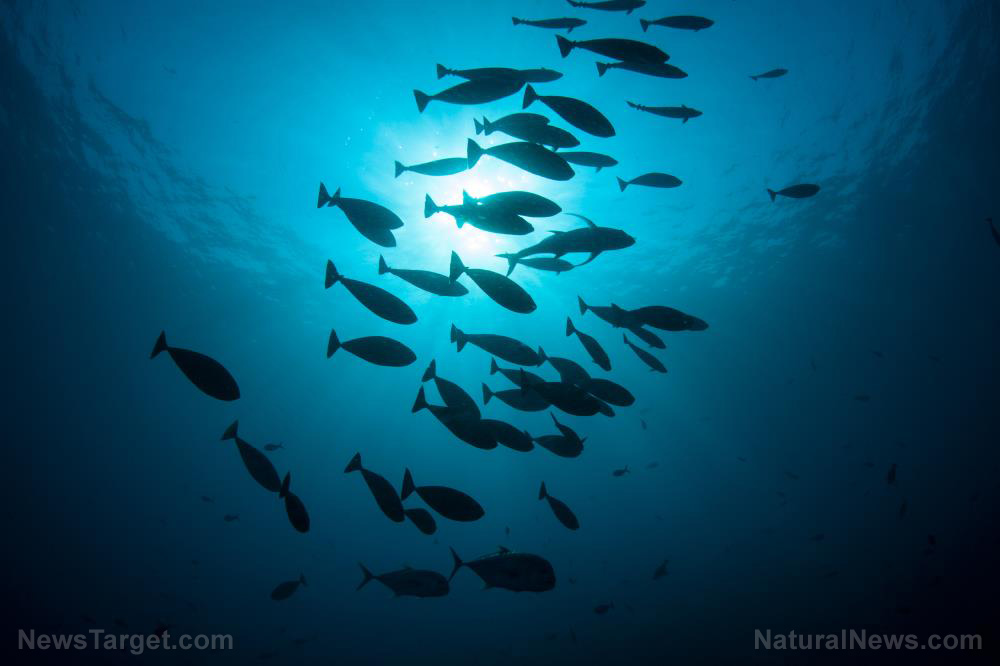
(Natural News) That beautiful glow you see on beaches at night may actually be the biological equivalent of warning sirens, according to a new study.
In a study published in the journal Current Biology and supported by the Swedish Research Council, researchers found that for at least one dinoflagellate species (Lingulodinium polyedra), bioluminescence functions as a defense mechanism that helps them ward off predatory copepod grazers.
“That bioluminescence, in addition to being a beautiful light phenomenon in the sea, is a defensive mechanism that some species of plankton use to ward off their enemies,” Andrew Prevett of the University of Gothenburg in Sweden, said in their paper.
According to Prevett, the bioluminescent cells within the dinoflagellates can sense the concentrations of the copepod grazers and “turn up the light” when needed. The researchers said that this ability helps to better protect the unicellular organisms from the grazers, letting them survive longer to reproduce and therefore compete better with the other plankton.
The primary source of flow-agitated bioluminescence in coastal regions, according to the Scripps Institution of Oceanography, dinoflagellates are microscopic organisms known for their mixotrophic behavior, which means they combine photosynthesis with the ingestion of prey. Currently, there are about 2,000 species of dinoflagellates known worldwide, with 220 known to live exclusively in freshwater habitats. The microscopic organisms have also been linked to toxic red tide. (Related: EXTINCTION approaching: Glowing “blue tears” in China’s seas are TOXIC and steadily growing every year, warn scientists.)
The researchers, in their paper, said they were able to observe this behavior by watching a combination of high-speed and low-light sensitive videos.
Prevett and his fellow researcher Erik Selander, as well as their collaborators at the Technical University of Denmark, revealed that the dinoflagellates’ bioluminescent cells flash upon contact with the copepod grazer. The copepod then reacts by rapidly rejecting the flashing cell, seemingly unharmed.
According to the researchers, observational data gathered from the West Coast of Sweden support their study’s prediction that the presence of copepod grazers would have a positive effect on the abundance of bioluminescent L. polyedra. They noted that while the single-celled, bioluminescent dinoflagellates are usually poor competitors compared to other plankton because of their slow growth rates, the copepods reject them in favor of grazing on more poorly defended but otherwise faster-growing plankton species.
The researchers added that while they expected the increased bioluminescence to result in reduced grazing by copepods, they were still surprised by just how great the reduction was.
“Earlier studies had shown that dinoflagellates with naturally brighter bioluminescence than L. polyedra were grazed less but still required cell concentrations to be relatively high before all grazing on the bioluminescent cells ceased,” Prevett said. “L. polyedra abundance in our study is low by comparison, and we were surprised at how effective the bioluminescence defense became despite this.”
Despite these observations however, the researchers said it is still unclear just how the bioluminescence helps the dinoflagellates.
According to Prevett, there are three popular theories as to how bioluminescence protects dinoflagellates. The first is that it acts as aposematic coloration, a warning to potential grazers that the cell is toxic or harmful to the grazer, one way or another. The second is that the flash of bioluminescence behaves like a flash-bang and startles the copepod, disorienting it long enough for the dinoflagellate to escape. The third theory suggests that the flash acts as a form of burglar alarm, attracting the attention of a larger visual predator, like a fish, which could track and consume the predatory copepods.
The researchers noted that there is evidence to support each of these theories, as well as the possibility that bioluminescence-derived protection could be a combination of some or all of the above.
Sources include:
















